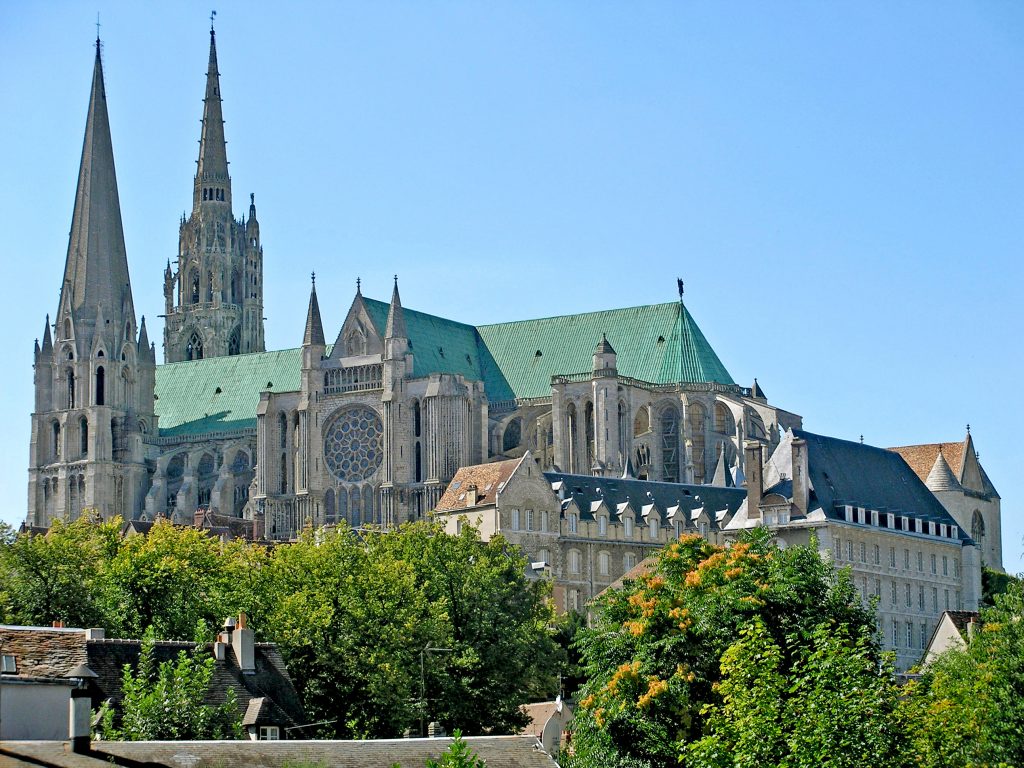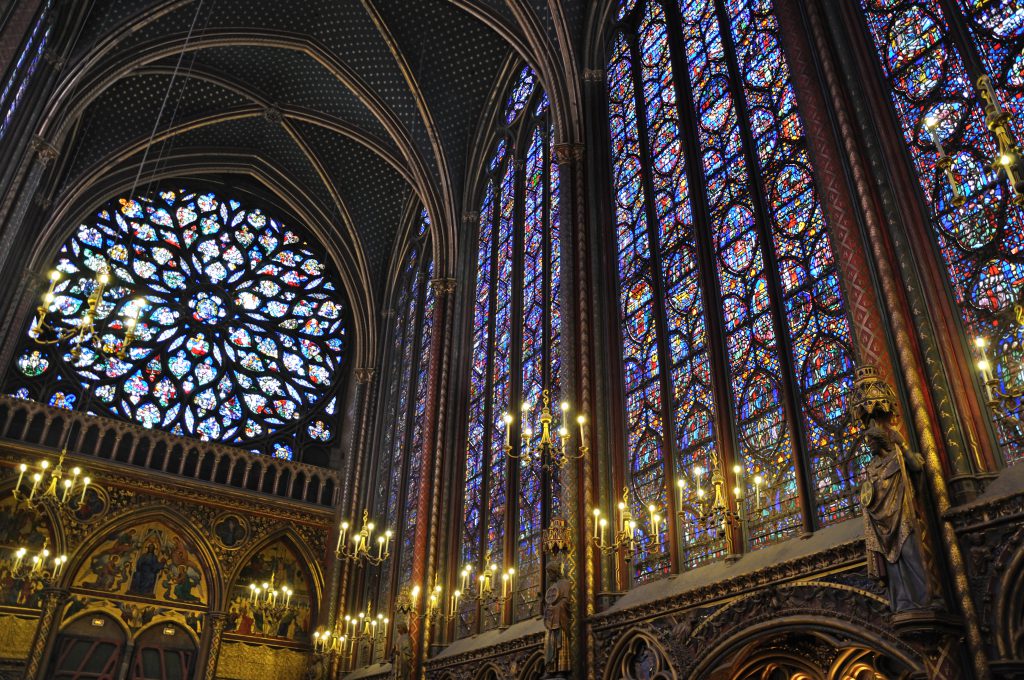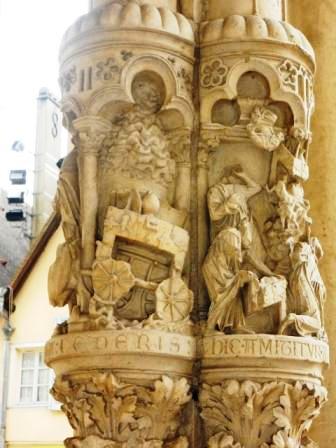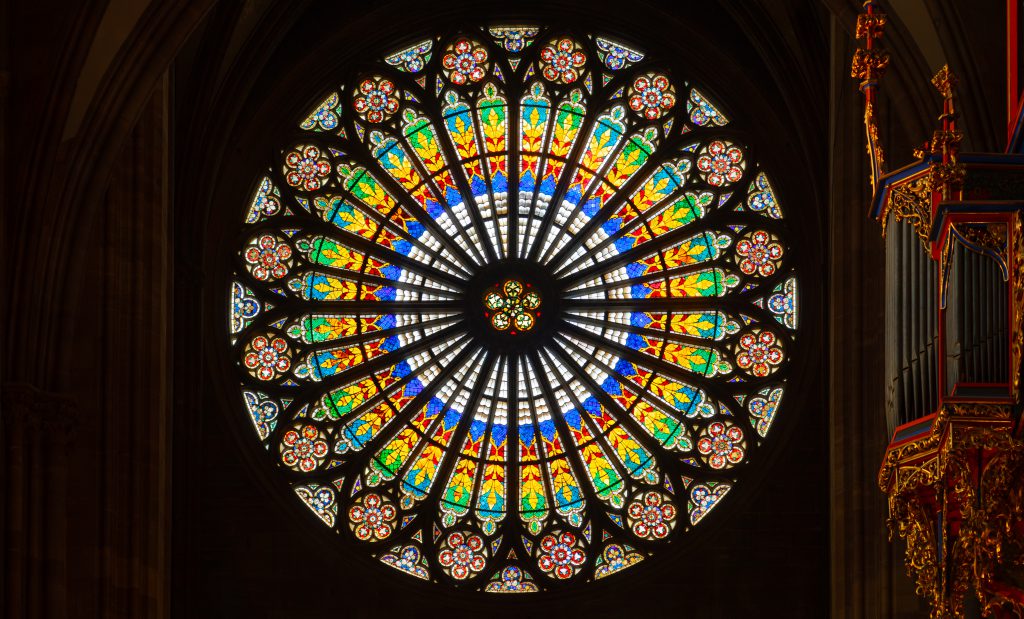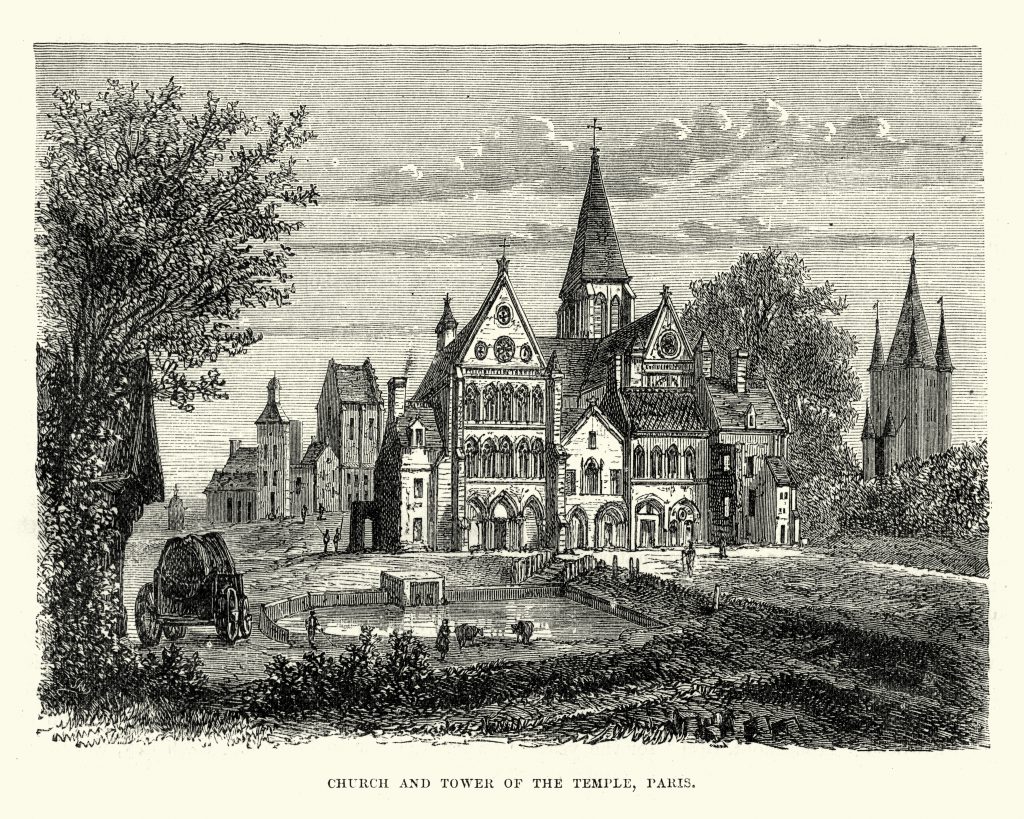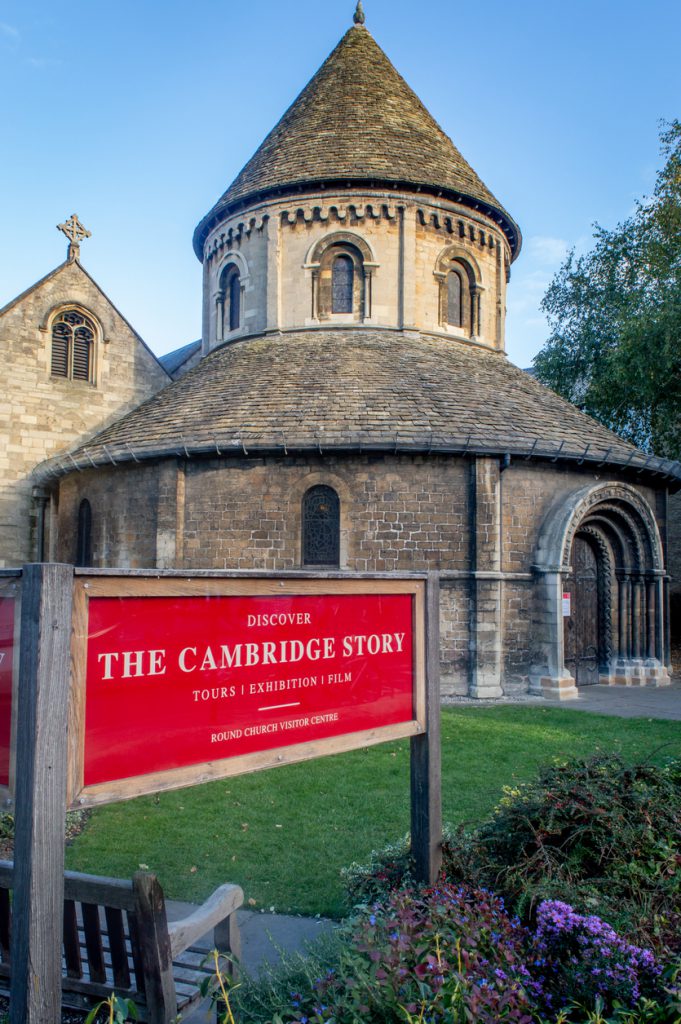Suggested Readings
To find out more about everything there is to see in this section, including all content, books, Synopses, and photos, start by clicking on any book you choose. Then use the Next… links following each Synopsis to cycle through all the pages in this section of the site.
Georges Duby, The Age of the Cathedrals: Art and Society, 980-1420, University of Chicago Press, 1981. Georges Duby, a professor at the College de France, traces the origins of gothic architecture to the striving of monks and scholars of the 11th century to “grasp the concealed order of the universe.” According to Duby, members of the Benedictine and Cistercian orders sought to comprehend the interaction between the invisible and the visible …More
Otto von Simpson, The Gothic Cathedral: Origins of Gothic Architecture and the Medieval Concept of Order, Bollingen Series, Princeton University Press, 1956. Otto von Simpson was a professor of art history at the Free University in Berlin. In 1956, he published this ground-breaking work. Simpson writes that the “Masters of Chartres, like the Platonists and Pythagoreans of all ages, were obsessed by mathematics; it was considered the link between God and the world, the …More
Louis Charpentier, The Mysteries of Chartres Cathedral, Avon Books, New York, 1975. The Mysteries of Chartres Cathedral has remained a unique and intriguing work, widely sold today in the bookshops on the cathedral square in Chartres. Experiencing the impact of the interior of the cathedral, Charpentier asks, “What then was this magic I felt so near to understanding?” The secrets of Chartres are challenging to penetrate today, …More
Peter Ellard, The Sacred Cosmos: Theological, Philosophical, and Scientific Conversations in the Twelfth-Century School of Chartres, University of Scranton Press, Scranton and London, 2007. According to Ellard, the twelfth-century scholars at Chartres perceived all tangible reality to be an expression of the mind of God. They immersed themselves in the newly rediscovered philosophical works of antiquity and were especially fascinated by the teachings of Pythagoras, Plato and the later neo-Platonists. They were eager to …More
Keith Critchlow, “Chartres Cathedral: A Sacred Geometry” (Available as DVD from Amazon).
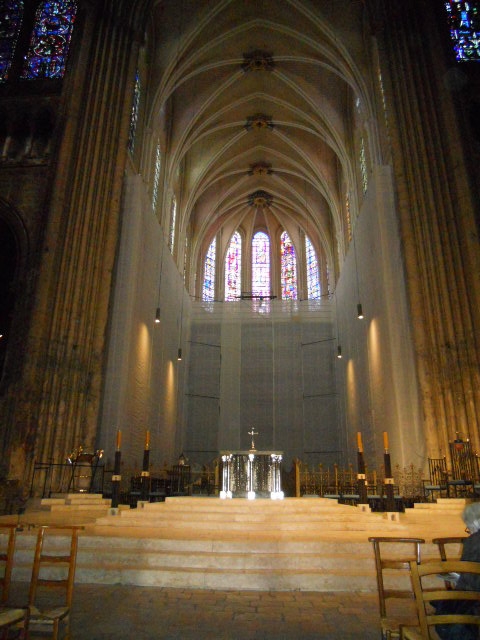
Robert Lawlor, Sacred Geometry: Philosophy and Practice, Crossroad, New York, 1982. The “phenomenal world we perceive,” Lawlor writes, “is best understood as systems of pure pattern, or as geometric structures of form and proportion.” The “architecture of physical existence is determined by an invisible, immaterial world of pure form and geometry.” Bernard of Clairvaux, founder of the Cistercian Order, wrote …More
Fulcanelli, Master Alchemist, Les Mystere des Cathedrales, Brotherhood of Life, Las Vegas, Nevada, 1990. Les Mystere des Cathedrales was first published in Paris in 1925. “Fulcanelli” is a pseudonym and the identity of the author himself, or herself, has remained murky. Fulcanelli’s focus is on Notre Dame de Paris. Chartres is, strangely, mentioned only in passing. Fulcanelli believed alchemy and the gothic cathedrals to be closely …More
Gordon Strachan, Chartres: Sacred Geometry, Sacred Space, Floris Books, Edinburgh, 2003. Strachan finds the origin of gothic architecture during the 12th century in connections developed between Western Europe and the Islamic world and cites the influences of Islamic Spain. His focus, however, is on the role of the Crusader kingdoms in the Holy Land as a source for Islamic knowledge imported back to France. Crusaders, …More
Painton Cowan, Rose Windows, Thames and Hudson, London, 1979. During the 12th century, France experienced a cultural renaissance. Around 1150, rose windows began to appear in the new gothic cathedrals of the Ile de France. Creation of the great gothic cathedrals reached its height during the centuries of expanding religious and intellectual freedom that, by the middle 1200s, were …More
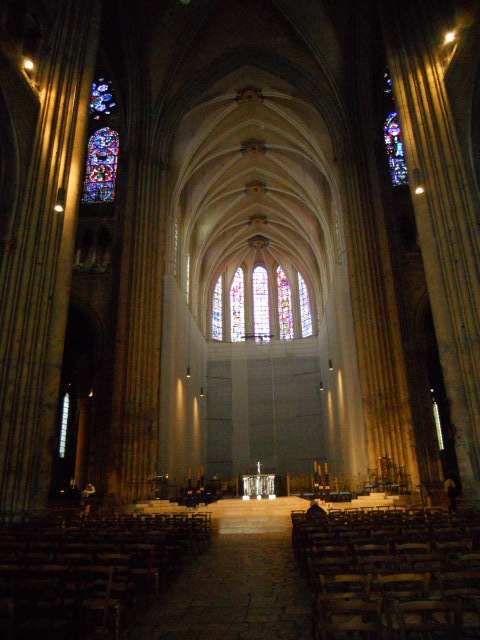
Rene M. Querido, The Golden Age of Chartres: The Teachings of a Mystery School, Floris Books, Edinburgh, 1987. Making use of the wisdom of ancient Greece, inherited in turn from even earlier civilizations, Querido writes that the builders of Chartres strove for their cathedral to be “a gateway to cross the threshold into the spiritual world.” Bernard of Chartres attributed the understandings embraced there to a rich heritage from preceding …More
Colin Ward, Chartres: The Making of a Miracle, The Folio Society, London, 1986. “Once upon a time,” architect Colin Ward writes, “the world was full of miracles.” Chartres was “of all places one of the most miraculous.” Ward observes that “unraveling the enormously complex geometry of a building like Chartres is the labor of a lifetime” and tells us that sculptor Auguste Rodin described Chartres as the “Acropolis of France.” …More
Edward Burman, The Templars: Knights of God, Destiny Books, Rochester, Vermont, 1986. In 1099 the knights of the First Crusade conquered Jerusalem and a portion of the Holy Land. The Order of Knights Templar was founded in Jerusalem nine years later and was originally comprised of only nine members. The knights of the Order received favored treatment from King Baldwin II who provided them with lodging in his …More
Lynn Picknett & Clive Prince, The Templar Revelation: Secret Guardians of the True Identity of Christ, Touchstone, New York, 1997. Despite Lynn Picknett’s and Clive Prince’s admirable efforts, much about the Knights Templar remains a mystery. The Order of the “Poor Fellow-Soldiers of Christ and the Temple of Solomon” was officially established in 1118 in the aftermath of the First Crusade which had succeeded in re-taking the Holy Land for Christianity. Clive and Prince don’t, unfortunately, have a trove of newly unearthed Templar archives to share. In the early 1300s, the Templars would be …More
Stephen Tobin, The Cistercians: Monks and Monasteries of Europe, Overlook Press, Woodstock, New York, 1995.
Alan Butler and Stephen Dafoe, The Knights Templar Revealed: Secrets of the Cistercian Legacy, Fall River Press, New York, NY, 1999.
Freddy Silva, First Templar Nation: How the Knights Templar Created Europe’s First Nation-State, Invisible Temple Books, Portland, Maine, 2012.
Norman Cohn, The Pursuit of the Millennium: Revolutionary Millenarians and Mystical Anarchists of the Middle Ages, Pimlico, London, 2004. The communities of the first Christians were very different in many aspects from Christianity a thousand years later. As written in Acts, “All that believed were together, and had all things in common…neither said any of them that aught of the things he possessed was his own.” Beginning in the 12th century, itinerant …More
Robert KC Forman, Meister Eckart: Mystic as Theologian, Element Books, Rockport, Mass, 1991. Meister Eckhart lived from approximately 1260-1327 and was a Dominican prior as well as a professor of theology in Paris and Cologne. By the late 13th and early 14th centuries, medieval Germany had a long heritage known as the “Rhineland Mystical Tradition”. Hildegard of Bingen, 1098- 1179, had been among the region’s influential …More
Julian Green, God’s Fool: The Life and Times of Francis of Assisi, Harper One, New York, NY 1983.
Urban Tigner Holmes, Jr., Daily Living in the Twelfth Century: Based on the Observations of Alexander Neckam in London and Paris, University of Wisconsin, Madison, 1952.
Francis & Joseph Gies, Life in a Medieval City, Harper Perennial, 1981.
Tim Wallace-Murphy, What Islam Did for Us: Understanding Islam’s Contribution to Western Civilization, Watkins Publishing, London, 2006. In April 711, the Islamic general Tariq ibn Zihad led his army across the strait from Morocco to Gibraltar and then on into Spain. Within months the invaders occupied the royal capital of Toledo along with the important cities of Seville and Merida. Over the next decades, Islamic armies extended their northward …More
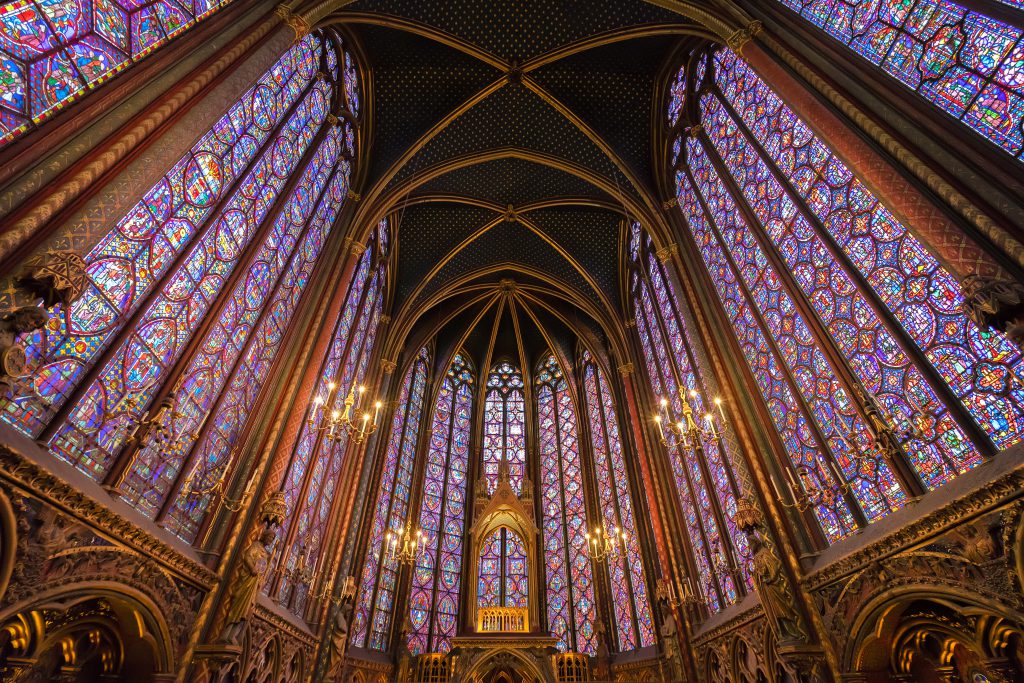
Next Section: Alchemy
